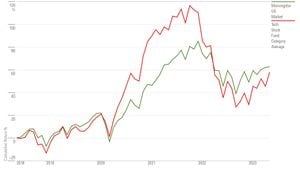A novel method known as Single-Cell Interpretable REsidual Decomposition (sciRED) has emerged as a powerful tool for enhancing the interpretation of single-cell RNA sequencing data, significantly improving the ability to discern biological signals from underlying confounding factors.
Single-cell RNA sequencing (scRNA-seq) plays a pivotal role within biological and medical research, allowing scientists to map cellular heterogeneity by observing gene expression patterns across individual cells. Although it enables great insight, the technique is fraught with challenges; many researchers grapple with the noise, sparsity, and high dimensionality inherent to this data. Traditional data factorization methods attempt to mitigate these issues by separating and identifying signals, such as gene expression programs. Unfortunately, the factors identified by these methods often leave researchers struggling to interpret what they indicate. A team of researchers recognized this gap and developed sciRED to offer solutions.
The innovation behind sciRED involves four main steps: starting with standard single-cell gene expression data, removing known confounding effects, performing matrix decomposition to identify additional unexplained factors, mapping these factors to known biological processes, and determining the specific genes represented by these factors. The method systematically integrates statistical modeling—utilizing Poisson generalized linear models and Principal Component Analysis (PCA)—with novel interpretative metrics to provide clear visualizations of associations between factors and known covariates.
Applying sciRED to diverse datasets across various contexts has already yielded promising results. For example, it effectively identified sex-specific variations within healthy human kidney samples, demonstrating distinct cellular identity programs. This kind of output is particularly valuable considering the difficulties traditional methods face when addressing confounding variables, such as batch effects from multiple experimental conditions.
Another compelling use case for sciRED was evident when applied to PBMC data from patients with lupus, before and after treatment with interferon (IFN)-β. The analysis determined factors capturing immune stimulation signals, strongly correlational with specific immune cell types. The findings revealed two distinct factors: one associated with lymphoid cells exhibiting strong stimulation signals and another tied to myeloid populations displaying weaker responses. The results demonstrated sciRED's capability to discern biological signals masked by technical variables.
Results showed sciRED's performance favored its ability to minimize complications arising from signal entanglement, providing cleaner associations between covariates and signals identified through analysis compared to eight other factor analysis methods. Despite many methods yielding similar success rates, sciRED outperformed most, with its runtime remaining efficient even when analyzing substantial datasets.
“We developed Single-Cell Interpretable REsidual Decomposition (sciRED) to improve the interpretation of scRNA-seq factor analysis,” noted the researchers. The application of sciRED across various datasets not only provides easily interpretable factors but also brings to light unexplained factors, which may suggest hitherto unrecognized biological phenomena.
sciRED brings utility beyond mere identification; its interpretative measures unearth the biological processes underlying unexpected results. For example, the exploration of unannotated factors could suggest novel biological insights or novel pathways, as opposed to overlooked technical idiosyncrasies. The researchers recognized the significance of studying the unrecognized signals, stating, “Examining unannotated factors may capture novel biological processes or other covariates.” This statement emphasizes the potential for unexpected breakthroughs stemming from the comprehensive analysis made possible by sciRED.
The development of sciRED marks significant progress for the field of single-cell transcriptomics. It presents researchers with improved tools for capturing and comprehending the complex information contained within scRNA-seq datasets. Now equipped to navigate through extensive and noisy data, researchers can focus on more effectively addressing questions related to gene expression variability and cellular function.
sciRED's introduction could not be timelier, as its application continues to set the stage for future research and advancements within genomics and cellular biology. Future work may build upon the framework established by sciRED, creating pathways for integration with other technologies such as spatial transcriptomics and multi-omics data analysis. Overall, sciRED promises to significantly shape how researchers interpret single-cell sequencing data, potentially leading to transformative discoveries related to human health and disease.



